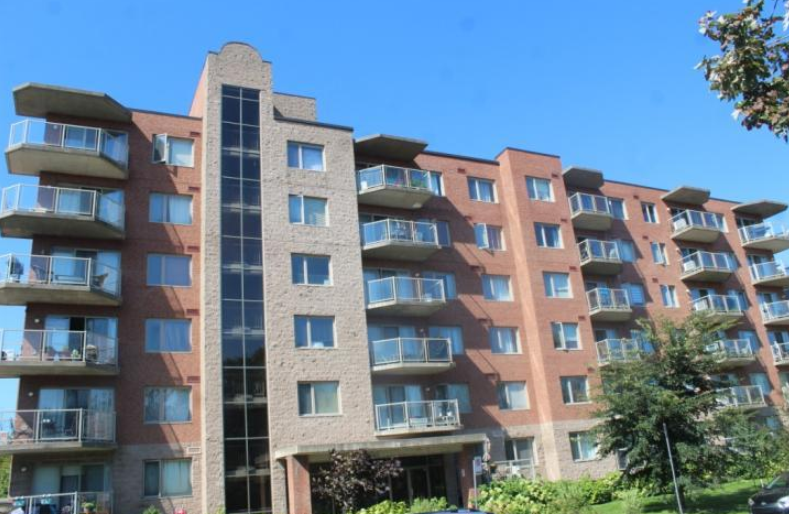There’s no better time than the arrival of spring to check for any lingering effects of winter. Freezing temperatures, snow accumulation from storms, and exposure to salt can cause subtle issues that may worsen in the coming months. Taking a few precautions now can help property managers and owners avoid major repair work later.

Why is spring the ideal time for building inspections?
In spring, many building components become accessible for the first time since snowfall. It is also a period of shifting ground conditions, allowing you to assess how well your property’s foundation and exterior stood up to months of icy weather. By acting now, you can spot the early warning signs that frequently go unnoticed in colder months.
Seasonal weather impact on buildings
When snow piles up, water can infiltrate hidden cracks and freeze inside them. Once it thaws, those cracks widen. Roof membranes, masonry joints, and even steel supports go through these freeze-thaw cycles repeatedly. That leads to incremental weakening. In spring, warmer weather mixes with rainfall, so leftover fissures and gaps can quickly become larger leaks.
The risks of delayed inspections
Every winter flaw that goes unchecked has the potential to evolve into a major structural concern. A small crack in a wall might develop into broader facade instability. An unnoticed roof leak could lead to insulation damage or mold growth. Delaying inspections means letting hidden problems develop. If you wait too long, you might face higher repair bills, as well as unplanned downtime for the building.
Roof inspections – Preventing costly damage
The roof is your first defense against water infiltration. Without a solid roof, serious moisture problems can spread across the upper floors, eventually trickling down through walls. Addressing potential roof issues right after the snow melts is a low-cost way to prevent expensive structural damage.
Common roof issues after winter
Ice dams often form when the snow melts unevenly. Water then accumulates behind those icy ridges, forcing moisture beneath shingles or seams. Flat roofs can face ice ponds that leave behind small tears once the ice moves. Shingles themselves may have lost protective coatings, compromising their water resistance. Debris such as branches or leaves may also pile up in gutters, preventing rainwater from draining correctly.
Signs of roof deterioration to watch for
Look for cracked or missing shingles, which can allow water to pass directly into the roof deck. Also note any discolored patches on ceilings or walls, since they often indicate leaks. If an attic has damp insulation or a musty smell, that is a good reason to investigate. On a flat roof, you might see bubbles forming in the membrane, suggesting water is trapped below.
Best practices for roof maintenance
Maintain clear gutters and downspouts to ensure proper drainage. Conduct routine, visual checks for surface damage on shingles or membranes. When possible, bring in a qualified inspector to verify that all sealants and flashing are intact. Investing in small repairs now helps avoid a wide-scale roof replacement down the road.
Facade evaluations – ensuring safety and compliance
Facades are more than an aesthetic feature. They safeguard occupants and passersby from falling materials and water intrusion. Regular facade inspections become even more important in Montreal, where regulations like Bill 122 demand detailed checks of building exteriors.
How winter affects building facades
Brick-and-mortar joints are susceptible to minute cracks that expand under freezing temperatures. Stone veneers may loosen if moisture settles behind them. Metal components can corrode when exposed to salt carried through wind or meltwater. Over time, these conditions can undermine the structural integrity of the exterior, leading to dangerous chipping or spalling.
Legal requirements for facade inspections (Bill 122)
Bill 122 mandates periodic inspections, especially for older buildings or those in areas with heavy foot traffic. These inspections go beyond a casual once-over. They involve close review of brickwork, balconies, and decorative elements. Building owners who skip mandated checks face potential fines and liability if materials come loose and cause injury.
When to call a professional engineer
An experienced engineer can spot warning signs that many people miss. These experts can also provide official reports that satisfy legal obligations. Visible cracks, stains, or sections of loose facade material are indicators of deeper issues. Rather than risk a partial fix, call a specialist who can design a comprehensive plan to strengthen the structure.
Foundation assessments – Spotting structural red flags
A strong foundation protects the rest of the building from uneven settling and water damage. Spring is often the key season for discovering foundation changes because the soil thaws and shifts.
Common foundation problems in spring
As the ground warms, rainwater seeps into any cracks formed during winter. If the soil around a foundation is not graded correctly, water will pool next to basement walls. This extra moisture can worsen existing cracks. Clay soil around some Montreal properties swells when wet, then contracts when dry, adding pressure to foundation walls.
Warning signs of structural weakness
Cracks that run diagonally or horizontally in basement walls may point to settling. Doors that stick or floors that slope can be signs that the foundation is shifting. Water stains along the perimeter of the basement usually signal leaks seeping through weak spots. Each of these small indicators can reveal a larger foundation threat if not checked.
Preventative measures to protect your building
Good drainage around the structure is crucial. Simple measures like extending downspouts to direct water away from walls can help. Sealing minor foundation cracks keeps them from worsening during the next freeze cycle. If problems appear, consulting an engineer is a wise step. They can recommend whether reinforcing the foundation or performing a more targeted repair is necessary.
The importance of proactive building maintenance
Consistent upkeep not only meets legal requirements but also protects property value. Small issues that stay under control rarely snowball into major financial strains.
Benefits of regular inspections
Setting up regular inspection schedules helps property owners project future costs and avoid emergency repairs. This approach reduces stress for everyone involved because maintenance tasks are identified well in advance. It is also a practical way to maintain a safer environment for residents or tenants.
How Genispec can help protect your property
Genispec’s background in consulting engineering covers building inspections, detailed structural evaluations, and project management. They can guide property managers through Quebec’s regulatory framework, including Bill 122, and provide custom solutions for facades, roofs, and foundations. By mapping out both current and long-term strategies, Genispec helps building owners keep their assets sound.
What property managers and owners should take away from this article
What appears small now could become a serious problem in a few months. Look for signs of roof wear, facade damage, and foundation weakness. Organize inspections that address local rules. By acting early, you reduce costly renovations later and maintain safer environments for occupants. Partnering with specialized engineers like Genispec is a straightforward way to give your building the oversight it deserves.
